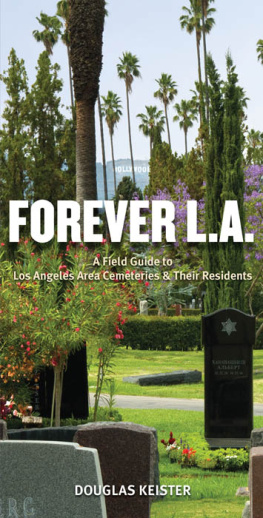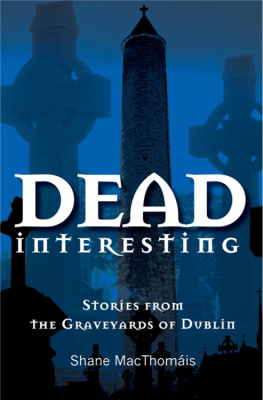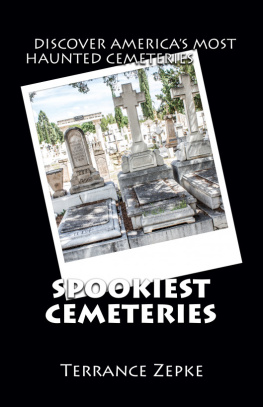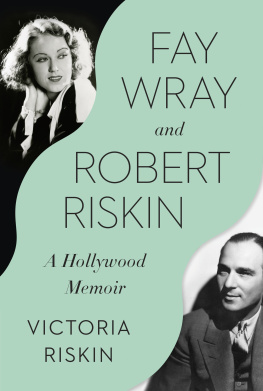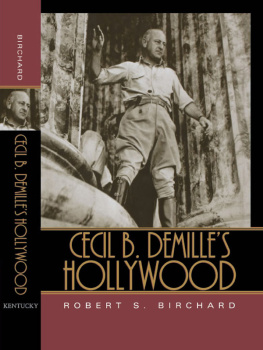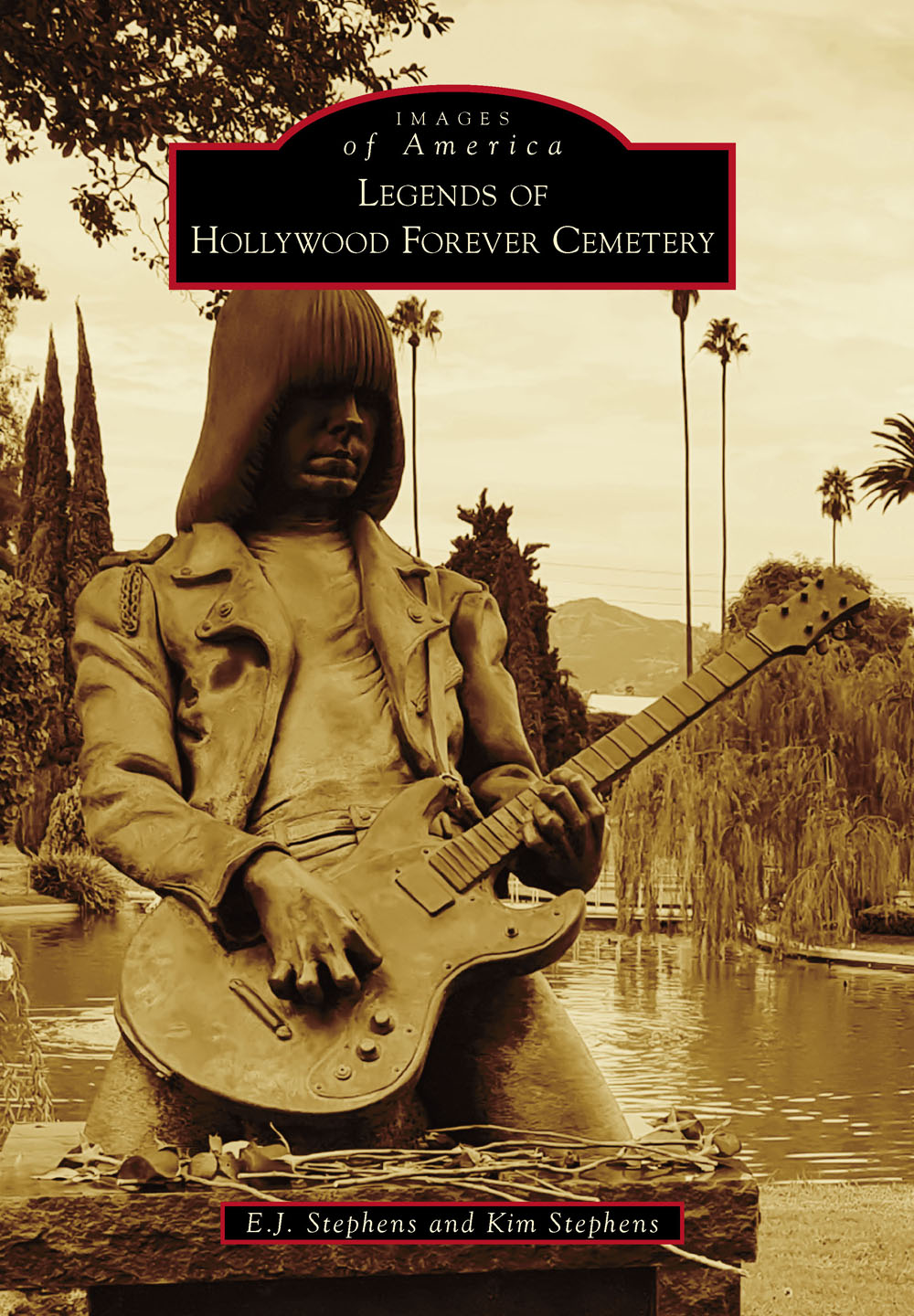
IMAGES
of America
LEGENDS OF
HOLLYWOOD FOREVER CEMETERY

HOLLYWOOD MEMORIAL PARK/PARAMOUNT STUDIOS, 1985. In this aerial photograph, Paramount Studios is visible at the bottom with what was then known as Hollywood Memorial Park at the top. Several years before this photograph was taken it appeared that Paramount was heading toward bankruptcy, and the studio was nearly bulldozed to make more room for the cemetery. (Courtesy of Bison Archives.)
ON THE COVER: HOLLYWOOD FOREVER CEMETERY, 2016. One of the most historic spots in America, if not the world, Hollywood Forever Cemetery contains the graves of hundreds of people who left their mark on the world of entertainment. Pictured here is the grave of Johnny Ramone, the guitarist for the Ramones. His statue has become a gathering spot in Hollywood for lovers of rock n roll, just as Jim Morrisons grave in Paris still attracts flocks of fans to Pere Lechaise Cemetery. (Photograph by Kim Stephens.)
IMAGES
of America
LEGENDS OF
HOLLYWOOD FOREVER CEMETERY
E.J. Stephens and Kim Stephens

Copyright 2017 by E.J. Stephens and Kim Stephens
ISBN 978-1-4671-2586-4
Ebook ISBN 9781439661420
Published by Arcadia Publishing
Charleston, South Carolina
Library of Congress Control Number: 2017942078
For all general information, please contact Arcadia Publishing:
Telephone 843-853-2070
Fax 843-853-0044
E-mail
For customer service and orders:
Toll-Free 1-888-313-2665
Visit us on the Internet at www.arcadiapublishing.com
Dedicated to Tyler Cassity and his staff at Hollywood Forever, who have breathed new life into the old boneyard.
CONTENTS
ACKNOWLEDGMENTS
The authors would like to thank everyone at Arcadia Publishing for their hard work, especially editor Stacia Bannerman.
Heartfelt thanks go out to Tyler Cassity and his staff at Hollywood Forever Cemetery for resuscitating a decrepit graveyard and transforming it into a place to celebrate life. We would also like to thank fellow taphophiles Karie A. Bible and Steve Goldstein for sharing their passion and love of Hollywood Forever. Thanks to the good people at findagrave.com for doing a lot of the heavy lifting. And a sincere thank-you to our friend Marc Wanamaker for being such a fountain of knowledge about Hollywood history and for making his treasure trove of Bison Archives images available to us.
We are button-popping proud of our children, Mariah and Dylan. We love you to the moon and back! We are grateful every day for our parents, Dick de Geus and Pherbia Stephens. And to Kims amazing mother, Lorey de Geus, who we lost during the writing of this book, we want you to know that you will be forever loved, forever remembered, and forever missed. We will carry you in our hearts all of our days.
The authors would like to thank our dear friends (in alphabetical order, to avoid the perception of favoritism) Arthur, Herb, Liane, Michelle, Renard, Sam, and Sean (the Disnerds) for their loyalty and friendship through thick and thin. Passion!
Kim would like to thank Caylyn Reeves (Is she from Frozen?) for keeping her sane during her day job. For the same reason, E.J. wishes to thank Erica Tomlinson, Jonathon Auxier, and LaFonda Perez.
And a shout-out goes to all the great Dia De Los Muertos celebrants at Hollywood Forever who help make it the most fun night of the year.
We strive throughout for location accuracy, but if any errors are found, please write us at .
All images courtesy of Marc Wanamaker/Bison Archives, unless otherwise credited.
INTRODUCTION
A turn takes you off Santa Monica Boulevardonce a stretch of legendary Route 66and away from the world of the living. Just past the gates, you coast to a stop under a shady tree. Stepping outside, you lock the doors, even though it doesnt feel like you need to. Although surrounded by thousands of people, the only sounds you hear are the rustling of the leaves, the splash of a fountain, and the honking of geese on a distant pond.
The necropolis you have just entered is the Hollywood Forever Cemetery, a city of the dead with a six-figure population. You have come here to disappear off the Los Angeles gridto slow the pace for awhile. You have also come to get unobstructed views of some of Tinseltowns most iconic landmarks: the 50-foot letters of the Hollywood Sign, the Griffith Observatory, and the Paramount Studios water tower. But mostly, you have come to commune with dozens of souls you never actually met, yet befriended during the hours they spent entertaining you from the stage, screen, or radio.
The first group of friends are found a short walk away, near the chapel. You enter a building with two floors of post office boxsized niches, each containing the cremains of a passed life. Downstairs, you pass by silent-era stars Bebe Daniels and her husband, Ben Lyon, the man who changed Norma Jeane Bakers name to Marilyn Monroe. Agnes Ayres, another silent star, is nearby. Upstairs is Jerry Siegel, half of the team that created Superman, and his wife, Joanne, who was the model for the first Lois Lane.
Along another passage, you pause to say hello to Ford Sterling, once one of the worlds most famous silent comedians, and Elmo Lincoln, cinemas first Tarzan. Continuing on to another building, you greet Joan Hackett, whose epitaph tells you to Go AwayIm Asleep. Clifton Webb, and possibly his ghost, is nearby, as is Renee Adoree, a delightful talent who has been forgotten by all but those who love silent film.
Farther along, you pause by Mildred Harris, Charlie Chaplins first wife. She is near Paramount cofounder Jesse L. Lasky and director Victor Fleming, who, during 1939, directed both Gone with the Wind and The Wizard of Oz. Ahead in a different building is Edgar Ulmer, a director who could guild cinematic gold from dirt-cheap Poverty Row budgets. The Ritz Brothers are close by, as is Nelson Riddle.
Outdoors, you stroll past the great Paul Muni toward Mel Blanc, a man whose thousand voices, all now silent, will entertain Warner Bros. cartoon fans forever. Waving to Carl Alfalfa Switzer, you pause to pay a visit to Charles Middleton, whose portrayal of Ming the Merciless terrified legions of young Flash Gordon fans everywhere during the 1930s. Close by is Alan Crosland, director of The Jazz Singer, the film that essentially ended the silent era. To the right is silent star Karl Dane, a tragic Tinseltown figure, who took his own life after losing his silent film career, thanks largely to Croslands work. In a nearby building adjacent to the Paramount lot is gangster Bugsy Siegel, who left behind both Las Vegaswhich he helped createand undoubtedly scores of bodies.
Ahead in the distance are Douglas Fairbankss pre et fils. Across the way by the lake is Johnny Ramone, the rarest of individualists: a punk rocker who was a conservative Republican. Nearby is Fay Wray, forever remembered as the love interest of King Kong. Continuing around the lake, you stop to offer pleasantries to director John Huston and Johnny Ramones bandmate Dee Dee. You greet Maila Nurmi, better known as Vampira, ironically watched over by Darren McGavin, who as the title character in Kolchak: The Night Stalker, hunted down vampires during the 1970s. McGavin is himself shadowed by fashion cop Mr. Blackwell.
Nearby is Col. Griffith J. Griffith, the man who donated to Los Angeles the huge park that now bears his name, yet went from hero to pariah after shooting his wife in the face. Looking up from Colonel Griffiths grave toward the Hollywood hills, you can see the observatory that is named after him. Continuing on, you find Cecil B. DeMille, the man largely responsible for the industry that lured many of the other Hollywood Forever residents to Southern California. Steps away you say hello to Florence Lawrence, the worlds first movie star, before retracing your steps to say good day to, Would you believe, Don AdamsMaxwell Smart himself.
Next page

